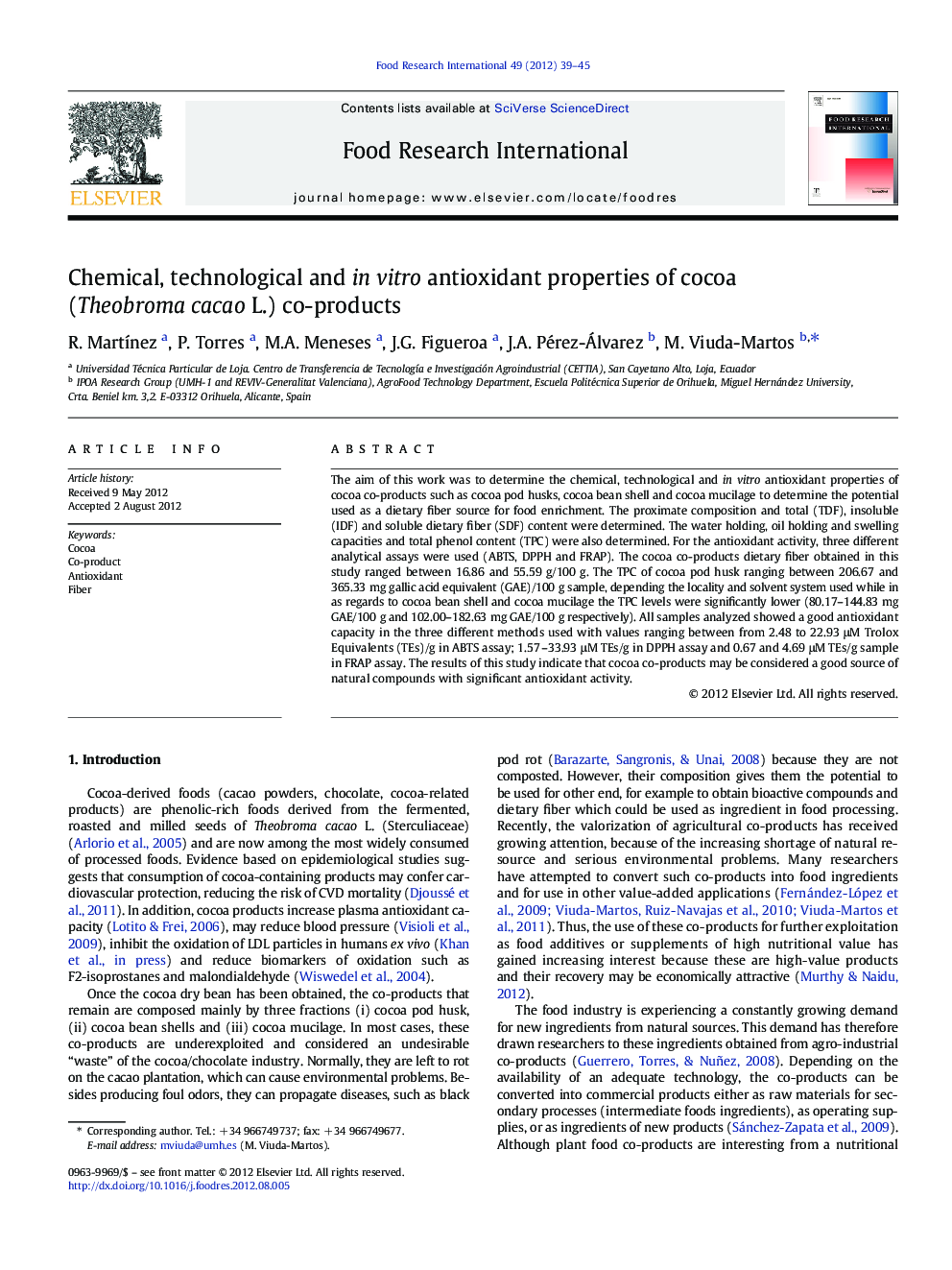| Article ID | Journal | Published Year | Pages | File Type |
|---|---|---|---|---|
| 6399015 | Food Research International | 2012 | 7 Pages |
The aim of this work was to determine the chemical, technological and in vitro antioxidant properties of cocoa co-products such as cocoa pod husks, cocoa bean shell and cocoa mucilage to determine the potential used as a dietary fiber source for food enrichment. The proximate composition and total (TDF), insoluble (IDF) and soluble dietary fiber (SDF) content were determined. The water holding, oil holding and swelling capacities and total phenol content (TPC) were also determined. For the antioxidant activity, three different analytical assays were used (ABTS, DPPH and FRAP). The cocoa co-products dietary fiber obtained in this study ranged between 16.86 and 55.59 g/100 g. The TPC of cocoa pod husk ranging between 206.67 and 365.33 mg gallic acid equivalent (GAE)/100 g sample, depending the locality and solvent system used while in as regards to cocoa bean shell and cocoa mucilage the TPC levels were significantly lower (80.17-144.83 mg GAE/100 g and 102.00-182.63 mg GAE/100 g respectively). All samples analyzed showed a good antioxidant capacity in the three different methods used with values ranging between from 2.48 to 22.93 μM Trolox Equivalents (TEs)/g in ABTS assay; 1.57-33.93 μM TEs/g in DPPH assay and 0.67 and 4.69 μM TEs/g sample in FRAP assay. The results of this study indicate that cocoa co-products may be considered a good source of natural compounds with significant antioxidant activity.
⺠Cocoa co-products are underutilized. ⺠These co-products are rich source of bioactive compounds such as polyphenolic and fibre. ⺠Cocoa co-products showed an interesting technological properties. ⺠All samples analyzed showed a good antioxidant capacity.
